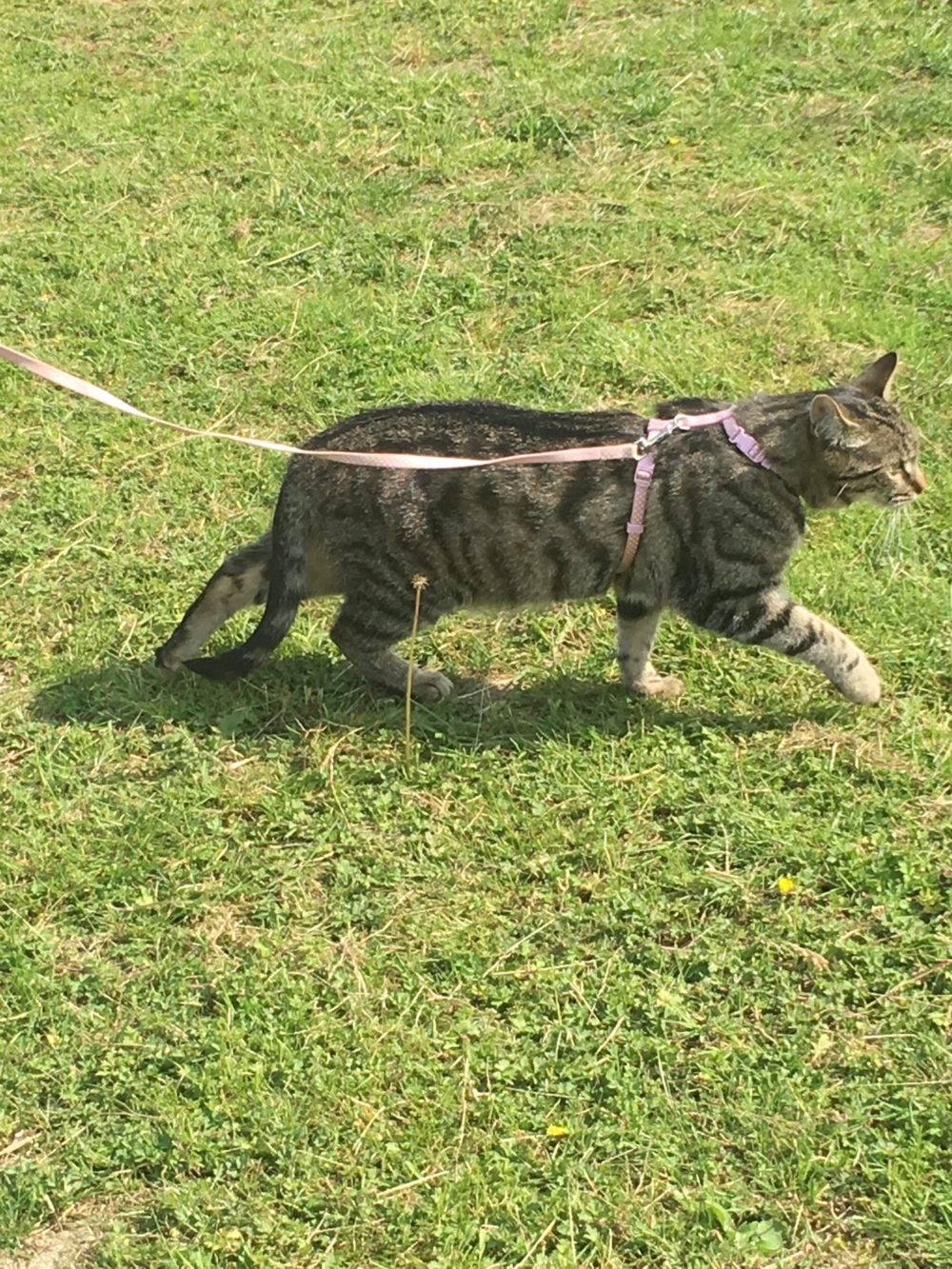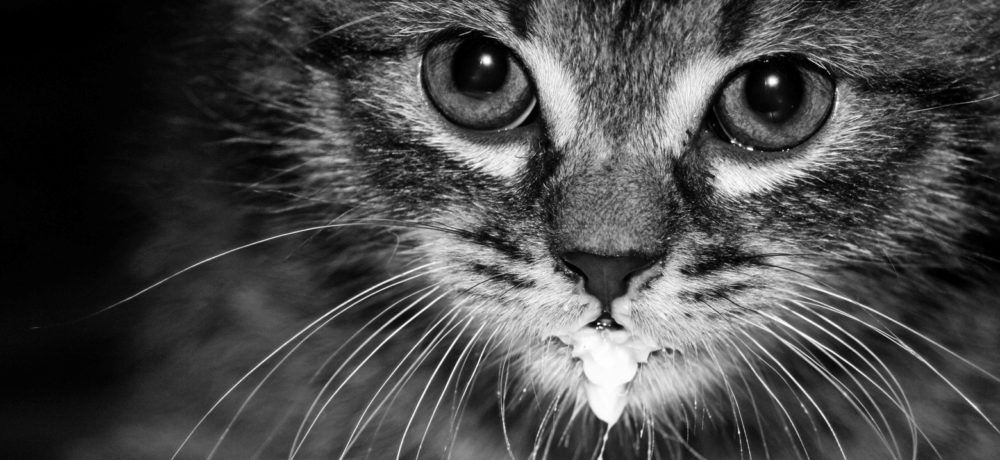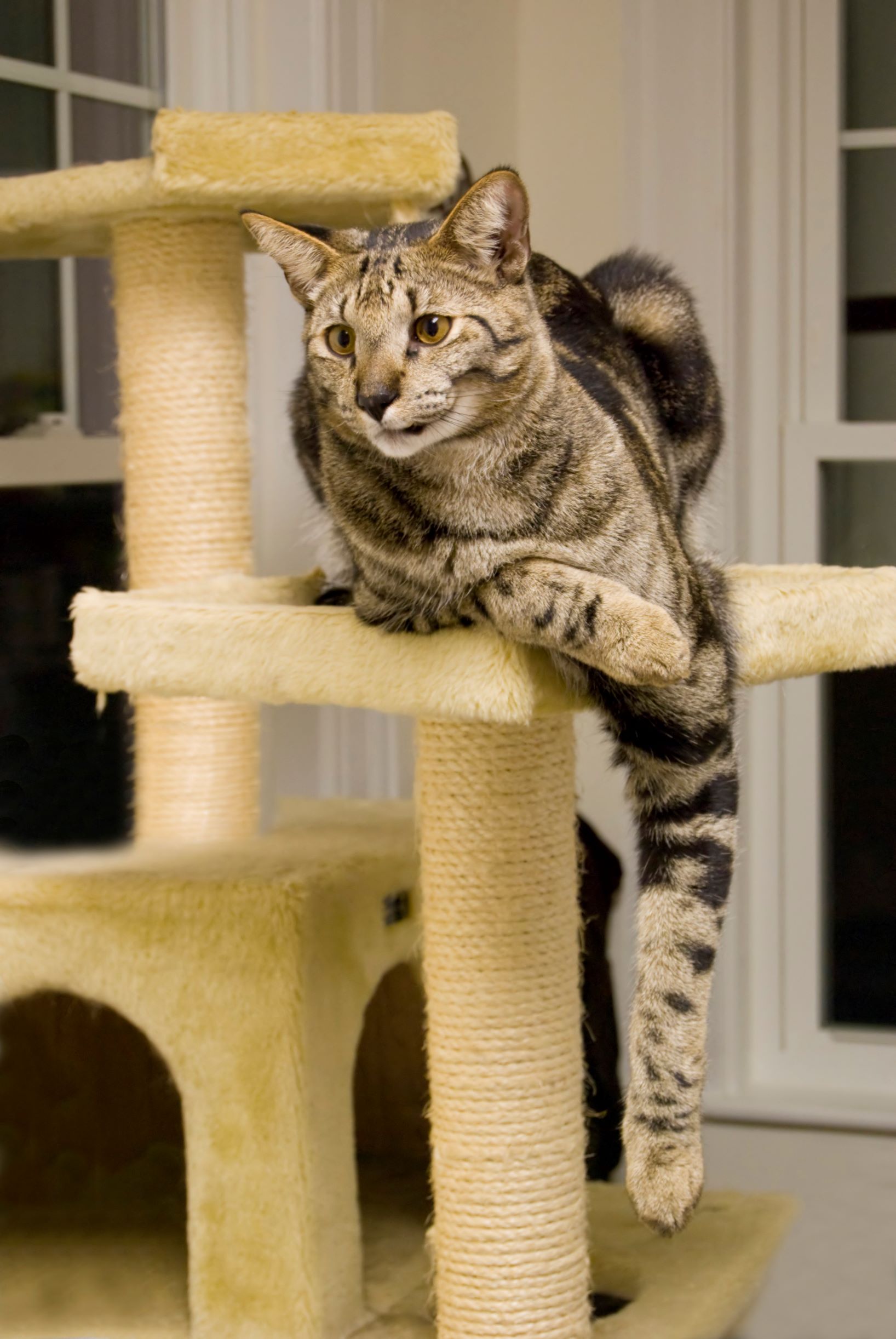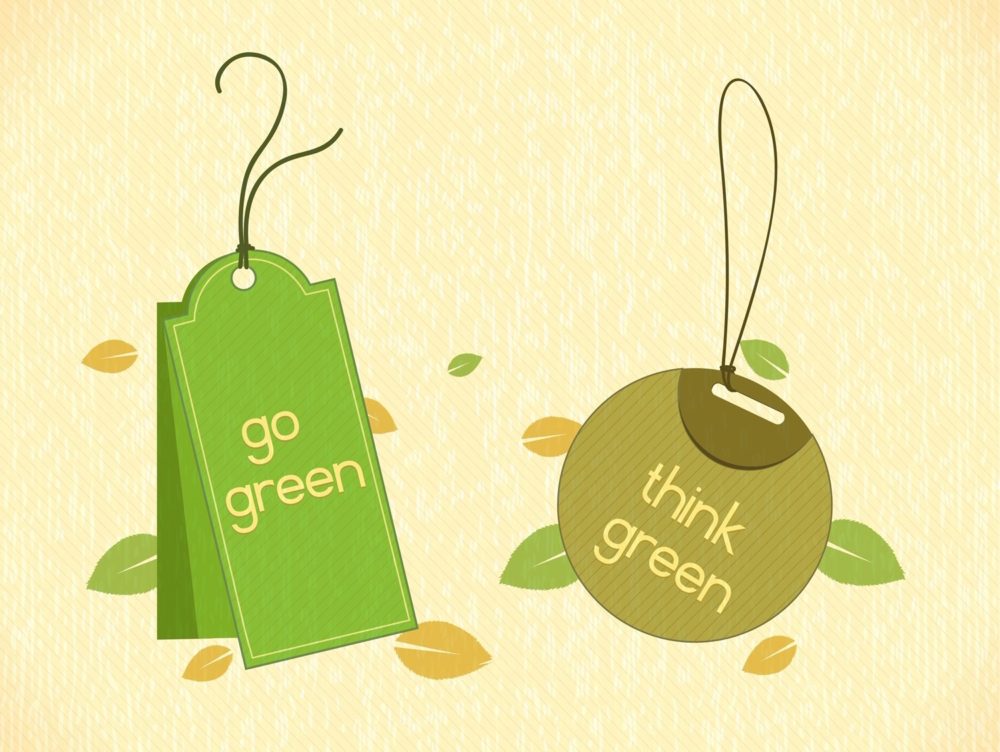
10 ways to become a green, environmentally, eco-friendly cat owner
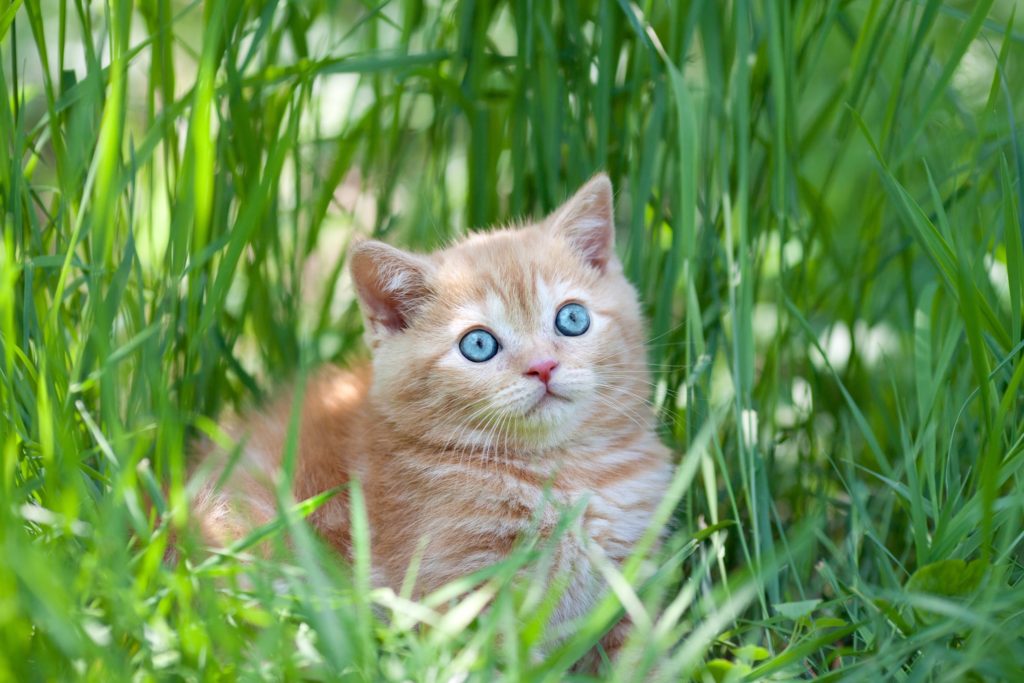
Becoming more environmentally friendly, reducing waste and recycling is becoming increasingly important to us all. In our household we recycle, reduce waste, run an energy efficient home and we are always seeking new ways to improve our green footprint. We are also a very busy household juggling work, children, pets and the general busyness of life therefore we tend to opt for options that are relatively easy to introduce and more importantly, to maintain. Having got the house and recycling running efficiently, we wondered if there was more we could be doing as cat owners to become more environmentally friendly. Our research revealed that there are many things cat owners can do to become greener. Some of the ideas are very quick and easy to do, others require more time and dedication. But each little change is a step in the right direction in protecting our planet. So, here are 10 ways to becoming a greener, environmentally, eco-friendly cat owner:
1. Use environmentally friendly cat litter
A high proportion of cat litter ends up in landfill. But there are now several options of green cat litter available on the market. The eco-friendly options of cat litter are made from various natural ingredients, ranging form plant fibres, recycled paper, sawdust or wood-chip, to whole-kernel corn. As with many things, what suits one cat may not suit another but the options available are wide-ranging enough to ensure even the fussiest kitty can switch to eco-friendly cat litter. Natural, environmentally friendly cat litter can also be turned into compost which can then be used in the garden to enrich the soil.
Regardless of what type or make of cat litter that you decide to use, each one of us can use less litter by only scooping out the necessary litter on a daily basis. There is no need to discard all of the litter every day. Ensure waste is scooped away daily and then every one to two weeks the whole litter can be changed.
If possible, buy your litter in bulk. This reduces packaging and overall production costs. Also check that the litter packaging is compostable or recyclable.
Some cat owners may decide to go a step further and investigate options of making their own cat litter. By using everyday products, such as plain sawdust or newspaper that would otherwise wouldn’t have any use, the benefit to the environment is that little bit extra.
A new kitten can be introduced to greener cat litter immediately, but it may take cats who are used to their usual litter a slow and gradual transition.
2. Make your own cat toys
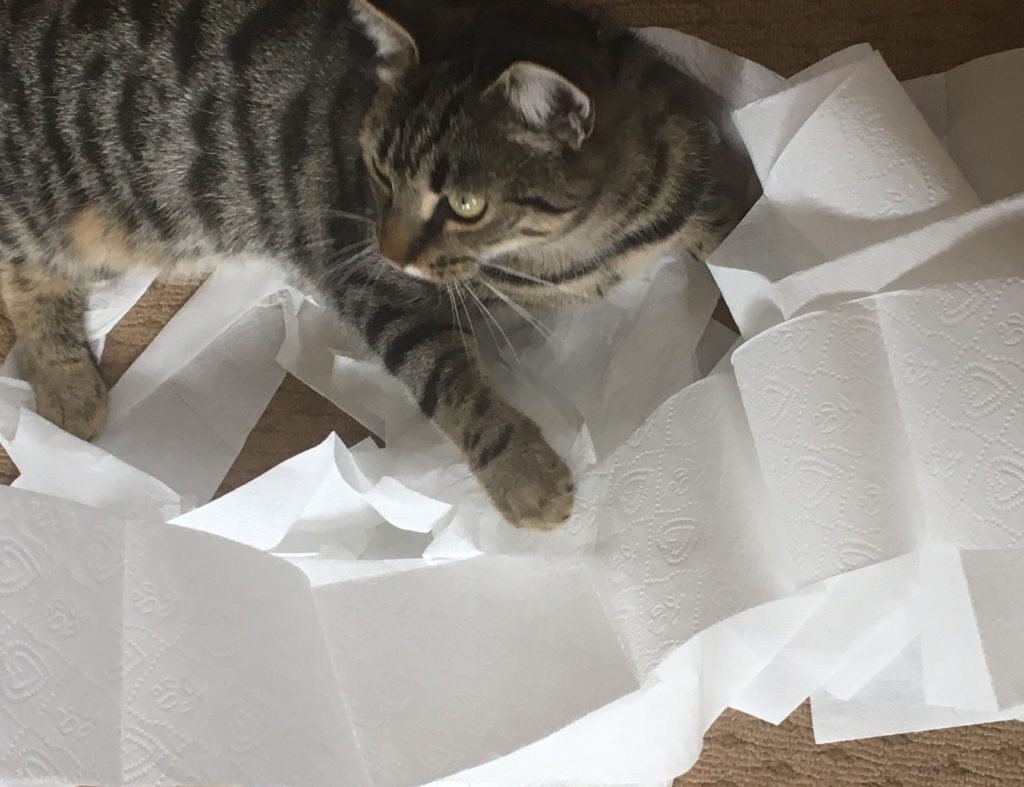 The market for cat toys is huge. Pet shops, supermarkets, online retailers have so much choice and variety to offer cat-owners. But cats can have just as much fun playing with the simplest of items which can be found around the home. Or try your hand at some home-made toys. In our article ’18 Games to play with your cat’ many of our suggestions use everyday items that we would usually throw out. Cardboard boxes and tubes, old newspaper, cotton reels and old rugs and a little imagination can provide free and fun entertainment for our feline friends. Most cats simply love to play and will simply not care whether their toy is a freebie or an expensive purchase.
The market for cat toys is huge. Pet shops, supermarkets, online retailers have so much choice and variety to offer cat-owners. But cats can have just as much fun playing with the simplest of items which can be found around the home. Or try your hand at some home-made toys. In our article ’18 Games to play with your cat’ many of our suggestions use everyday items that we would usually throw out. Cardboard boxes and tubes, old newspaper, cotton reels and old rugs and a little imagination can provide free and fun entertainment for our feline friends. Most cats simply love to play and will simply not care whether their toy is a freebie or an expensive purchase.
If you are buying new toys, or any other essentials for your cat, if possible, opt for toys made from recyclable or sustainable materials. Likewise if you have any unwanted toys, donate them to your local animal shelter or charity shop rather than discarding into a landfill.
3. Make your own cat food or buy in bulk
Some cat owners may feel that making their own cat food will reduce the amount of energy required to produce food and will not require the use of packaging. Please consult your veterinary for advice if you decide to make your own cat food. They can advise on quantities and nutritional information. The options of making cat food at home won’t be practical for many cat owners but there are still many steps that can be taken to minimize the impact on our environment:
- Ensure that any packaging, pouches or tins, are recyclable.
- Buy in bulk to reduce packaging.
- Many pet stores will now offer the option of taking your own containers to the store and filling them with dry foods. This will significantly reduce the amount of packaging required.
- Support companies that are ethical and environmentally conscious in their production methods and sourcing of food.
4. Make your own cat treats
If making your own cat food is not an option at this moment in time, it may be that making homemade treats is an easier, more practical option. We all love to treat our cats. We want to show them we adore them and spoil them (whilst remaining healthy of course!). Treats are also invaluable when training, rewarding good behavior is always a positive affirmation. We have many easy ideas for home made treats in the following articles ranging from smoothies and soups to lovely cool treats for a hot summer’s day:
5. Upcycling and re-using
Walk into any pet shop and the choice and array of products available can be overwhelming. Very often the basics that your cat needs can be found nearer to home. Ask around and you will often find someone only too pleased to offer cat goodies that they no longer need. Our cats had a cat tree from a friend whose cat had simply got too old for any climbing. A member of the family sadly lost their cat and they passed on a cat bed and some toys to us. It didn’t lessen the grief for their own cat, but it did indeed bring them a little happiness that things they bought with love were once again being used and appreciated.
Upcycling is making something you no longer need or serves its purpose, into something useful. For example, once our children were past the baby stage, we no longer had a use for the baby mat activity centre. We gave it to our cats, and they love it. The soft, padded material makes it the perfect place to settle for an afternoon nap.
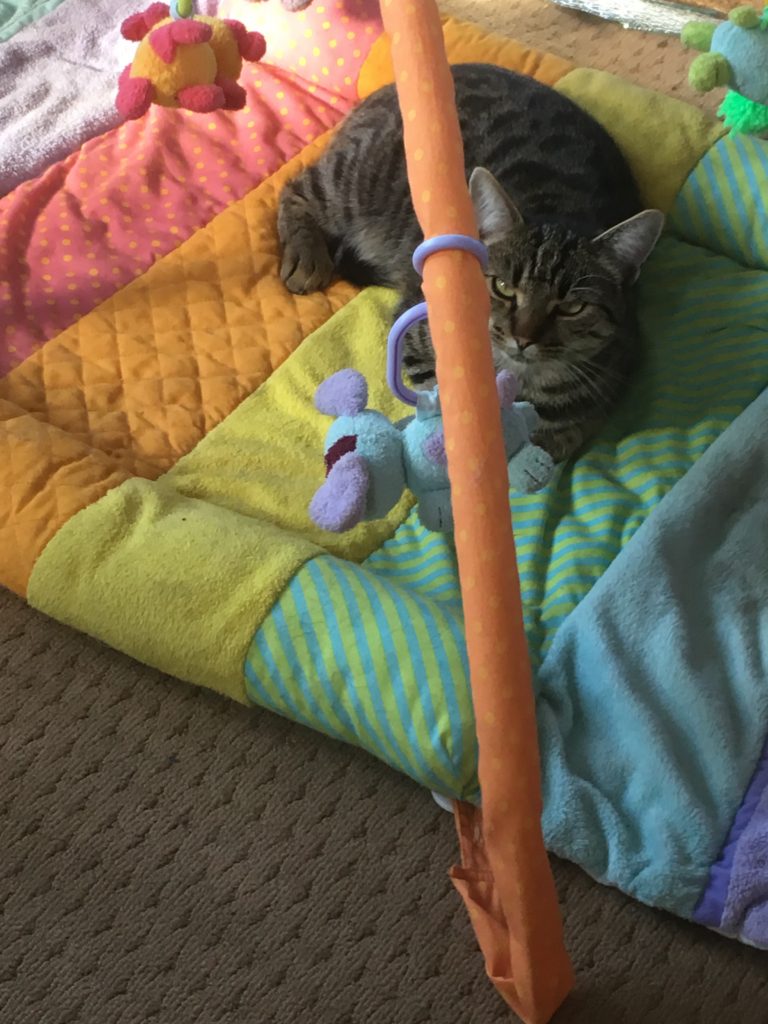
Our best examples of upcycling is by far the little cat house we made out of left over materials. An old pallet as a base, offcuts of wood to build the structure, packaging as insulation, felt on the roof to make it waterproof and even an old washing machine door as a little window! Offcuts of our new carpet were used to line the inside and there you have it – a perfect little cat house. This cat house is now a great little shelter in the catio. Read all about our catio build here, where once again, we used as much left-over materials as we possible could. The upcycling and recycling ideas are endless – knitting blankets, using old sweaters for bedding, making your own scratch post and toys. Not only will you save money, but every product re-used or upcycled is also making a contribution to becoming greener.
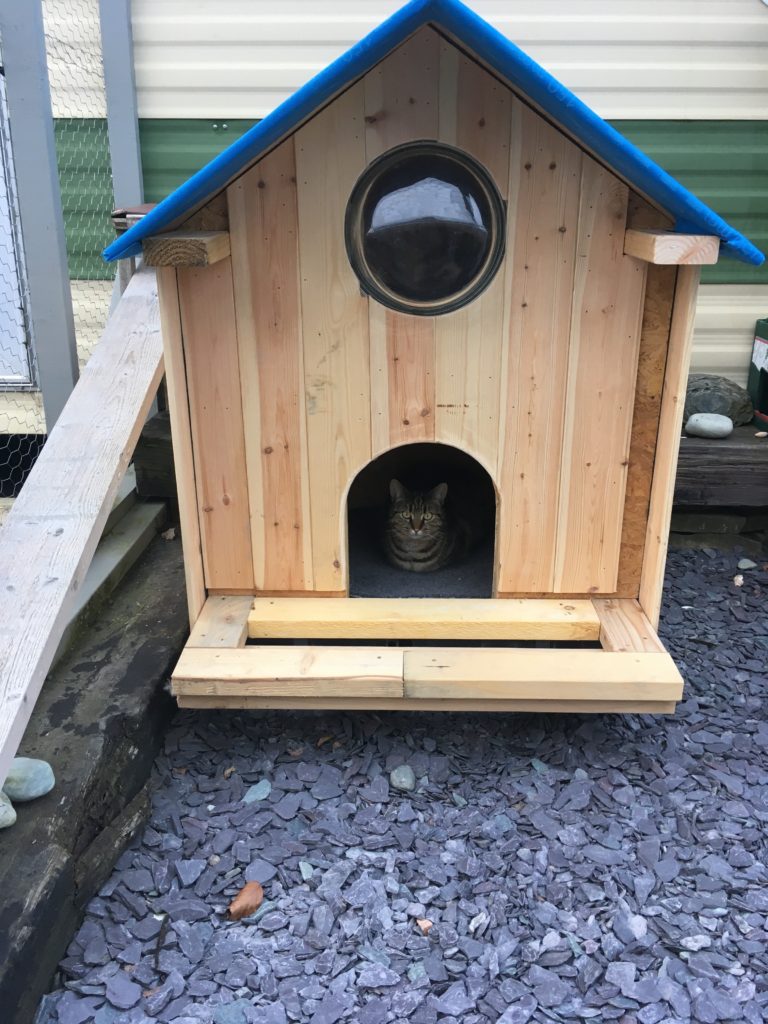
6. Support local cat shelters
Your local cat charity shop will most probably have used, or new, cat products and accessories. By buying a few used items here, it makes use of unwanted products whilst helping the charity raise funds to support found or abandoned kittens and cats. Likewise, if you have any items that you no longer need, cat shelters and their charity shops will be very appreciative of any donations.
7. Adopt a cat
Cat shelters have so many unwanted or abandoned kittens and cats. When the time comes to introduce a cat to your family, or to have an additional cat, why not see if there any kittens or cats waiting to be adopted at your nearest cat shelter. Providing a new home for a shelter cat will ensure that they will have one less cat to care for, safe in the knowledge the cat will be welcomed into a new loving family.
8. Spaying / Neutering your cat
A key factor in becoming a responsible, eco-friendly cat owner is to ensure that there are no unwanted litters of kittens. By neutering your cat, you are ensuring there will be no unwanted kittens filling up shelters and using resources.
9. Go chemical free
Keeping ticks and fleas at bay are a priority for all cat owners. Most traditional remedies for ticks and fleas contain various chemicals and pesticides. Various wildlife charities have concerns about the effect of these pesticides on habitats and in water courses. Many cat owners now adopt natural methods for dealing with fleas. The most popular ones include:
Apple Cider vinegar – Many cat owners use this method for treating fleas in cats. Simply mix apple cider vinegar with equal quantity of water and spray or rub the mixture onto your cat’s coat. If spraying, ensure that you shield your cat’s eyes from the spray mist. Apple Cider is also safe if ingested by your cats and it can be useful to put a little into their food to help with fleas too. Simply mix a ¼ of a teaspoon of the diluted mixture into food. White vinegar can also be used.
Lemons – Lemon juice is a very popular home remedy for treating fleas in cats. The lemon solution can easily be prepared by boiling a lemon or two in a saucepan then leave to soak for a few hours. The drained liquid can be gently rubbed or sprayed into your cat’s fur, repeating as necessary until fleas are gone. Avoid the delicate area around the eyes. Use a comb or brush dipped into the solution and give the fur a good brushing if your cat is not too keen on the solution being sprayed.
Flea comb – These fine-toothed combs are designed so that the fleas and their eggs can be removed when combing. This will be much easier if your cat is used to being groomed. We have a whole article dedicated to how and why we should groom our cats regularly – ‘Do I need to groom my cat? An introductory guide’.
Natural flea collars – there are many varieties of natural flea collars available infused with certain essential oils. This may help to deter fleas rather than cure an infestation.
Chamomile Tea – A gently but powerful method suitable for use on cats and kittens. Soak 2 tbsp of loose chamomile tea in boiling water for up to 30 minutes. Strain the tea and let it cool before spraying your cat’s fur. It is also very soothing on irritated or itchy skin.
Rosemary – This fragrant herb is non-toxic to cats. It can be very effective in treating fleas and can help to stimulate hair growth where scratching has occurred. Immerse a handful of rosemary in hot water, leave to soak, and once cooled, use the liquid on your cat’s fur.
This list is by no means exhaustive and you will discover many more home-made remedies on the internet. Please remember that natural does not always mean safe. Many herbs, plants and essential oils are toxic to cats, some can be fatal. Please ensure you research thoroughly and ALWAYS check with your veterinary if you have any doubts.
10. Using eco-friendly cleaning products
Whether it’s washing your cat’s bed bedding or washing their food bowls, by using eco-friendly products, this will reduce the amount of chemical detergent being washed into our water system. An EcoEgg Laundry Egg is great for laundry. The egg contains natural cleaning pellets and is free of any harsh chemicals. There is a fragrance-free version which is probably the best option to use when washing any of your cat’s bedding.
For washing food and water bowls, and giving the litter trays a good wash, hot water and a scrubbing brush will usually do the trick. There are also many eco-friendly washing up liquids available and will help shift stubborn dirt.
Little changes here and there may seem insignificant but if everyone makes little changes here and there then the impact becomes real and significant.
Other articles you may find of interest:
Creating the ultimate cat friendly garden – 10 top tips
Can cats get fleas from mice? Homeopathic & natural remedies for cat fleas
Natural and alternative healing for cats – an introductory guide
Bach Rescue Remedy for Cats – and other useful Flower remedies for cats
Reiki for cats: everything you need to know
Can you give arnica to cats and other homeopathic remedies for cats
Should I leave the heating on for my cat? Do cat’s fur keep them warm?
